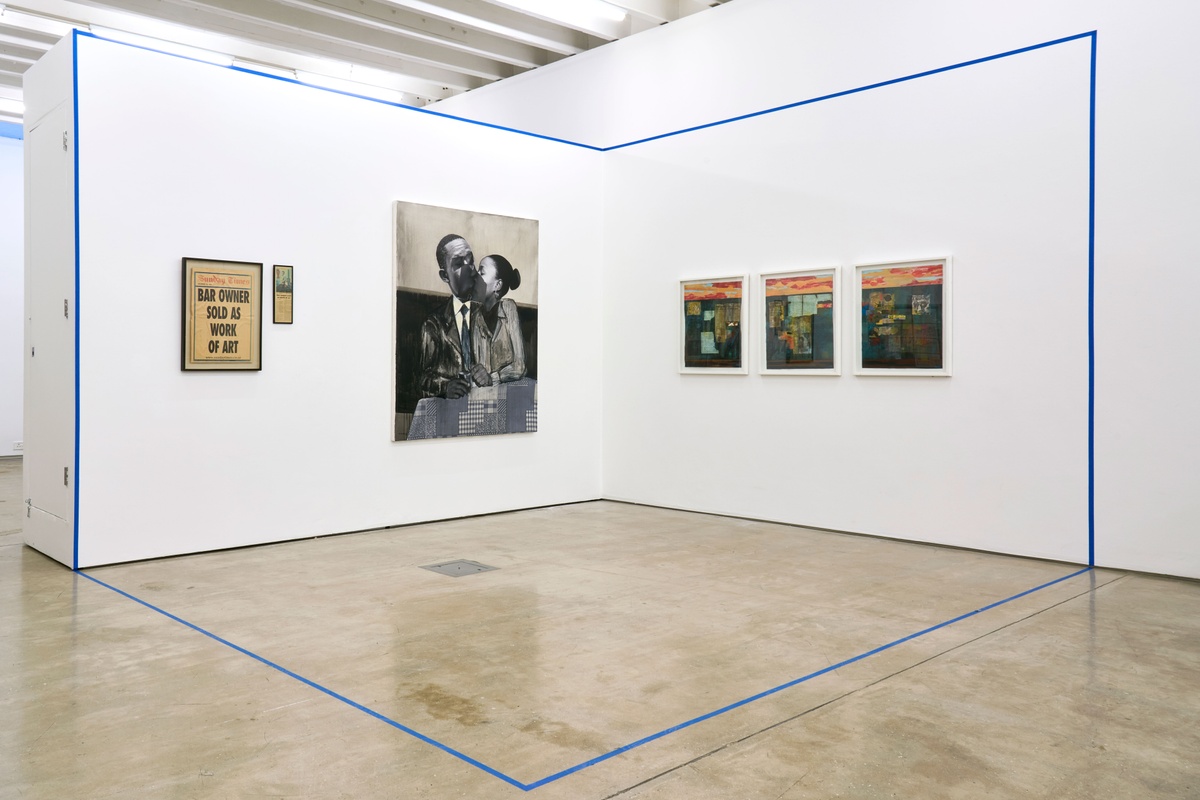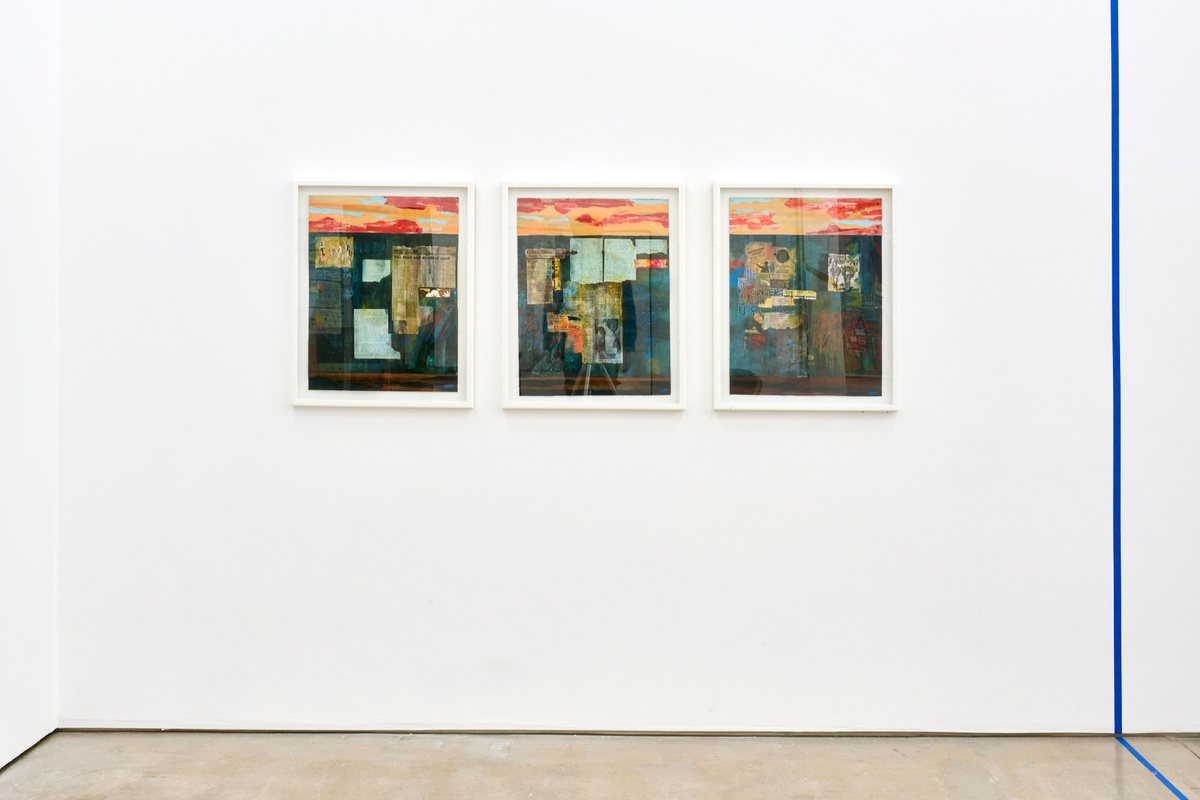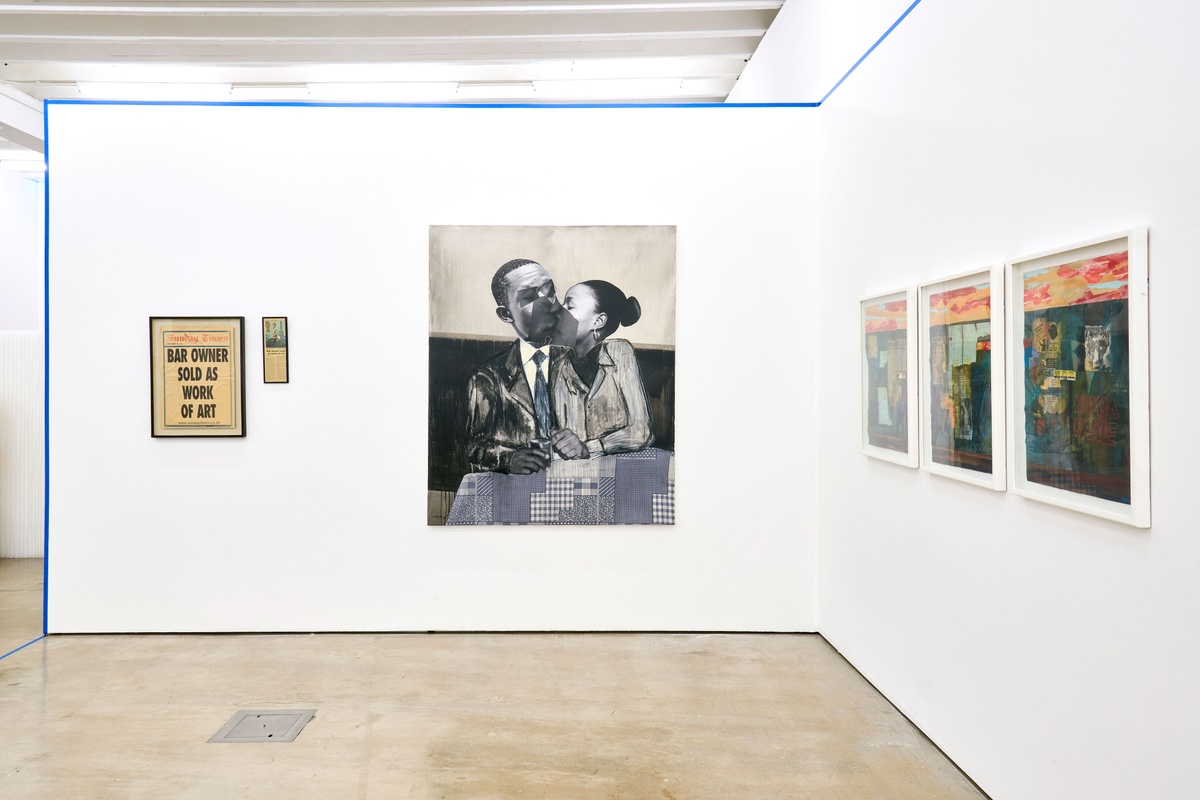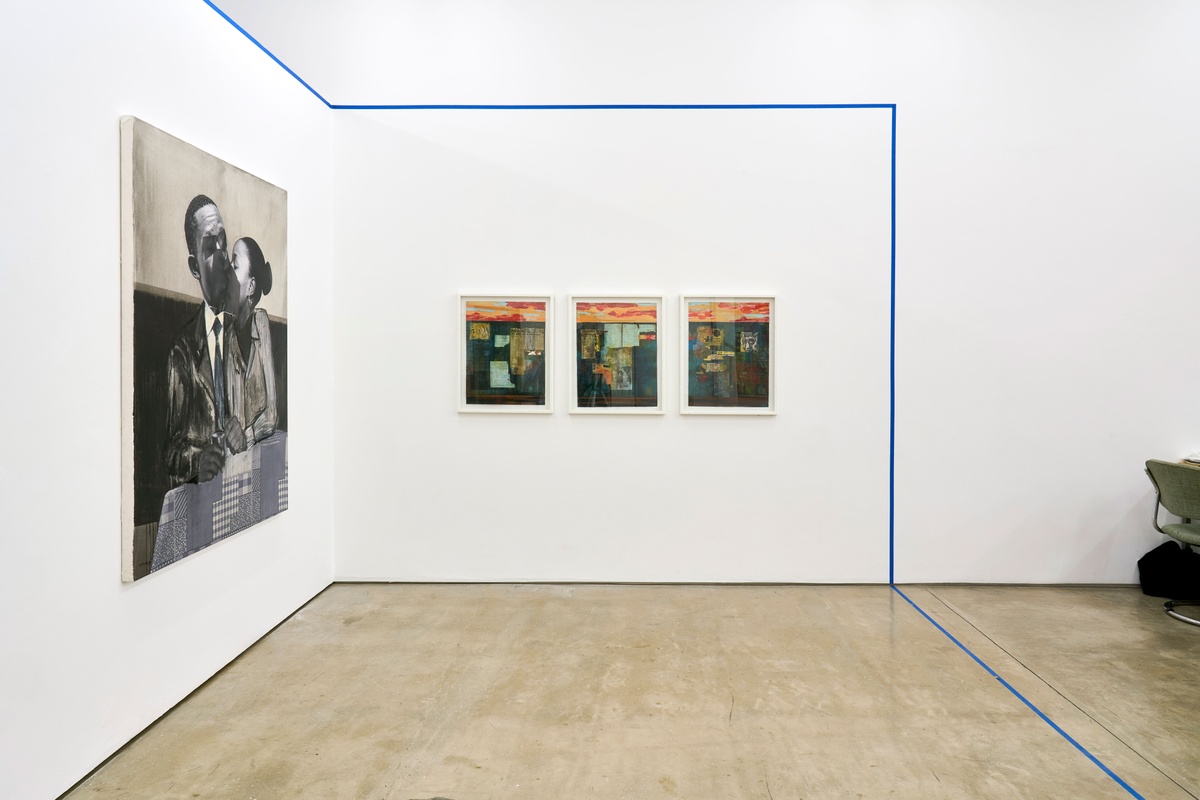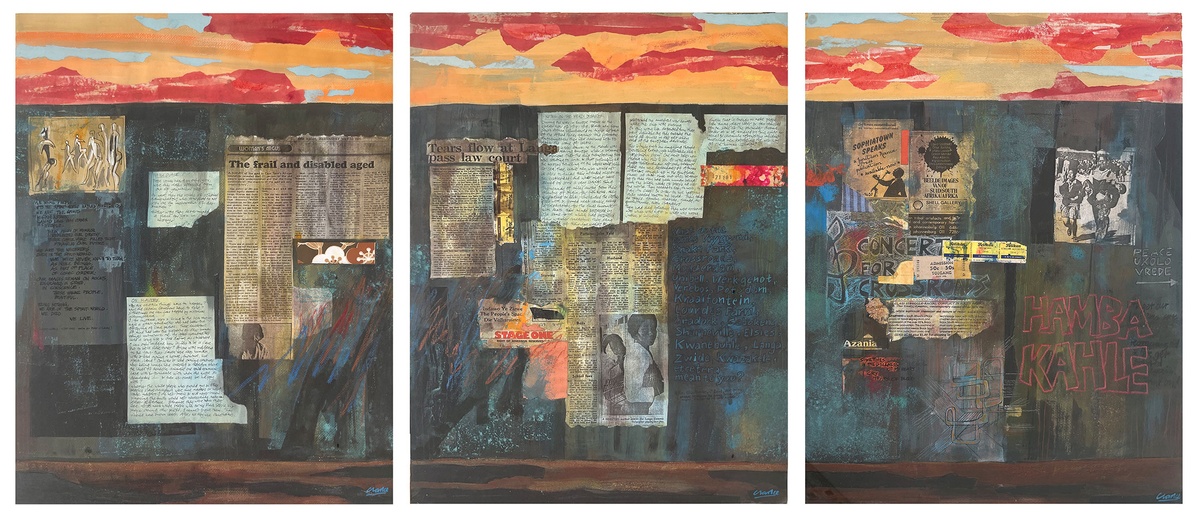Peter Clarke
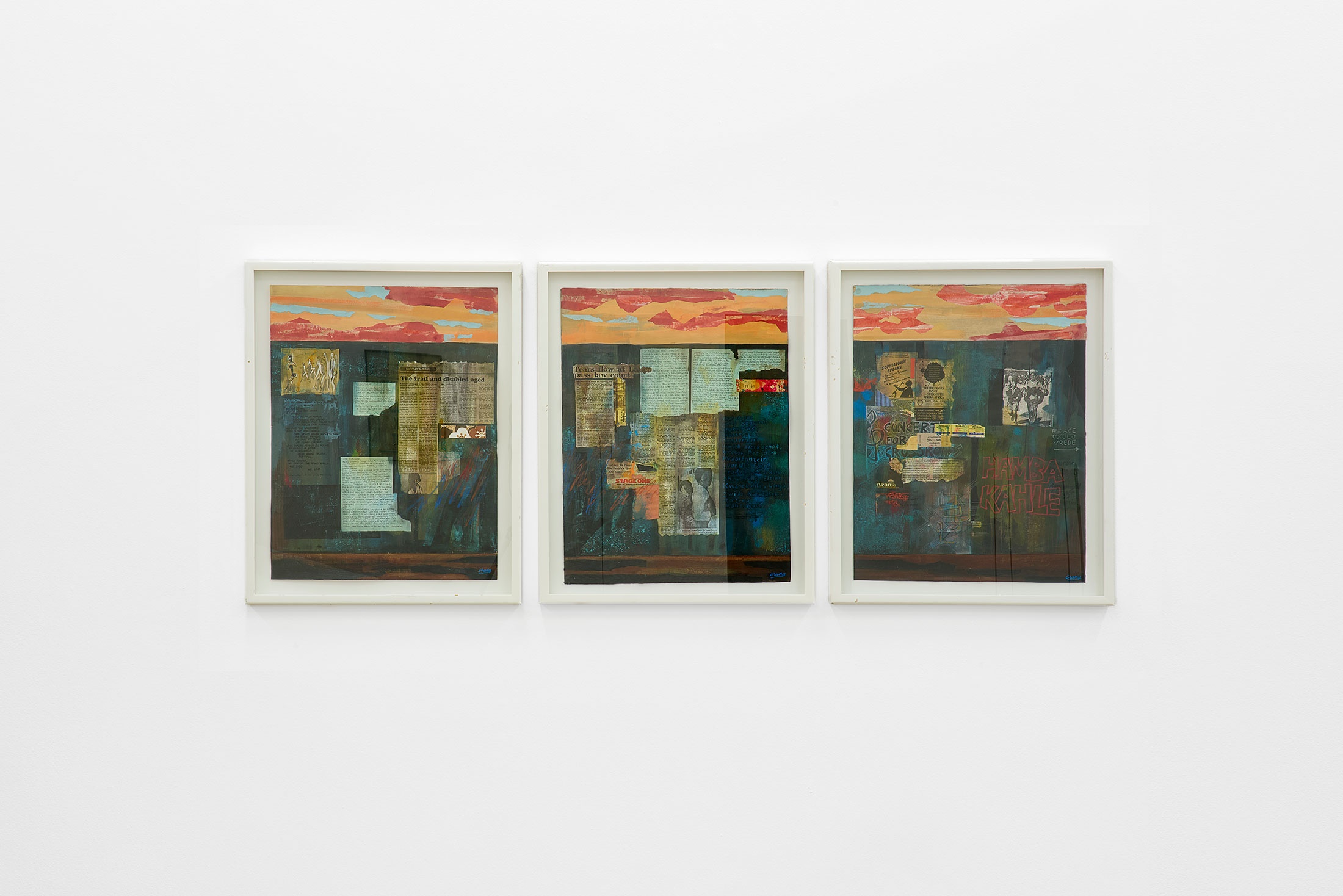
For those absent is included in Clarke’s Ghetto Fence series (1985–1999): largely abstract, mixed media works collaged with newspaper clippings, found objects, and texts handwritten in the artist’s elegant script. In composition, these follow closely on the figurative paintings of enclosed spaces that populated the preceding decade of his practice, the background compositionally reduced over time to three horizontal bands: ground, wall, sky. But where those works pursued a sense of pictorial perspective, in these collages, the artist’s attention instead turned to the accumulation of paint into which he embedded an assortment of ephemera; a sedimentary rather than illusory depth. In content, too, the Ghetto Fence series enacts a layering, drawing together fragments of an unseen whole. For those absent, in particular, does so to elegiac effect.
Though Abstract Expressionism was then in vogue – and espoused by the facilitators of the United States South Africa Leadership Exchange Program (later known as the Thupelo Workshops), in which Clarke was invited to participate in 1985 – its ideals sat uncomfortably alongside the political reality in South Africa. The second State of Emergency was declared that same year, and the escalating unrest that defined the period met with increased brutality. Where Clarke’s ‘ghetto’ theme had previously referenced apartheid spatial planning and social divides more broadly, in this triptych, it assumed “more epic terms: as a cruel history of displacement on the subcontinent,” to quote Philippa Hobbs and Elizabeth Rankin in their monograph on the artist, Listening to Distant Thunder (2014).
Collaged across the work’s three parts are references to a litany of tragedies, from the country’s past to the then-recent present –
that of the Khoisan, all but exterminated by European expansion; the subjugation of the Xhosa and their national suicide prompted by the prophetess Nonquase [sic]; the 615 soldiers of the South African Native Labour Corps drowned in 1917 with the sinking of the Mendi and denied recognition by the colonial government for their sacrifice; victimisation of people through apartheid pass laws; the death of Hector Pieterson and other schoolchildren during the Soweto Uprising; and the plight of frail and disabled people everywhere. Below a list of townships bulldozed or destroyed during forced removals, Clarke wrote: 'Bless this home, O Lord, we pray (because tomorrow the Group Areas Act might scatter us to hell and gone)’. In this entanglement of historical trauma is another text relating to Clarke's own family experiences, a prose piece on his slave ancestry…
– Hobbs & Rankin, 2014
b.1929, Simon's Town; d.2014, Ocean View
The late Peter Clarke’s paintings, prints, and poems offer an intimate window into life under the apartheid regime and the country's imperfect transition to democracy. An artist acutely sensitive to the poetics of the ordinary, Clarke played the role of ‘quiet chronicler’ and found in the domestic, everyday scenes around him a reflection of the historic moment. The many scenes Clarke depicted – both urban and rural – are at once document and symbol, as much images of place as they are of feeling. “I’ve been interested in space for a very long time,” he said of his peopled landscapes, “the spaces that separate people. The spaces that people have to traverse.” Such considerations would become particularly urgent to the artist. Clarke and his community were forcibly removed from their homes in the seaside suburb of Simon's Town to Ocean View in 1972.
